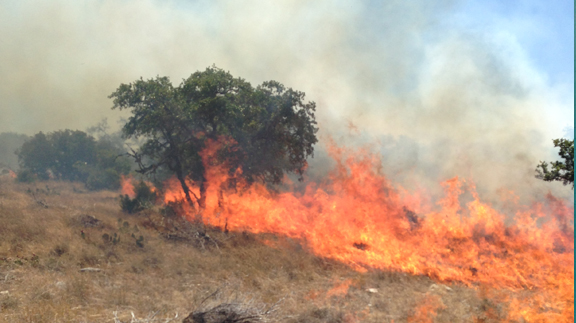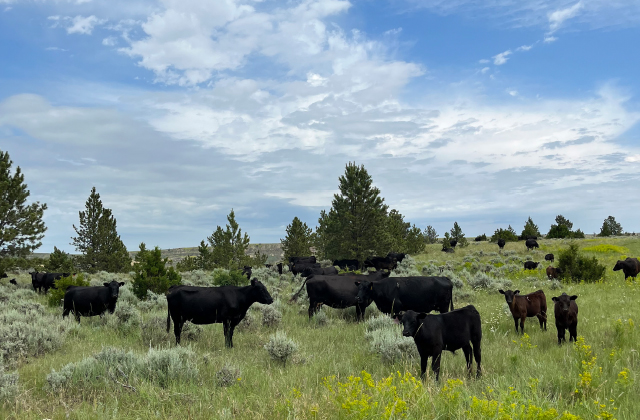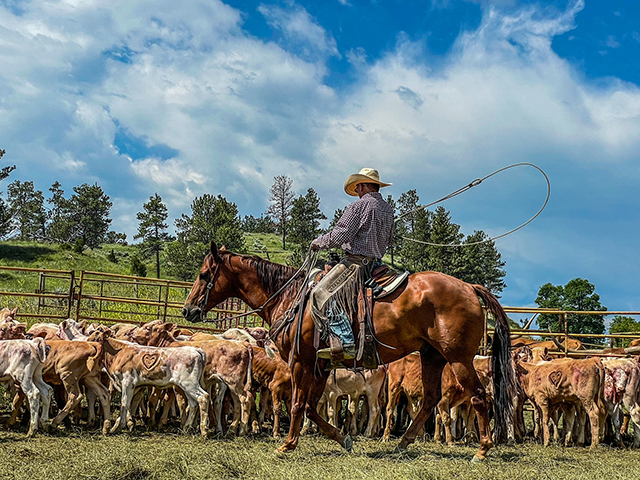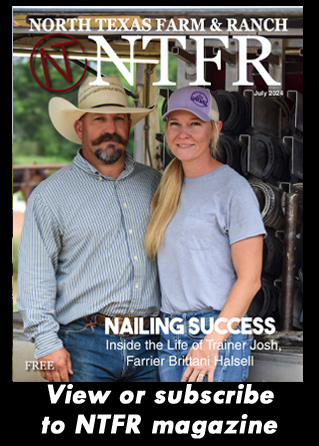Farm & Ranch
SAN ANGELO – Wildfire season is here and there’s fuel to burn.

By: Steve Byrns
Writer: Steve Byrns, 325-653-4576, [email protected]
Contact: Dr. Morgan Russell, 325-657-7317, [email protected]
SAN ANGELO – Wildfire season is here and there’s fuel to burn.
That’s the assessment of Dr. Morgan Russell, Texas A&M AgriLife Extension Service range specialist at San Angelo. She said during the week of Aug. 9, the Texas A&M Forest Service responded to 68 fires on 22,519 acres. Large fires were reported in Kimble, Edwards, Tom Green and Crockett counties.
“Extremely hot temperatures, low humidity, large amounts of dry grass and increasingly windy conditions are the perfect recipe for cooking up a very busy fire year,” Russell said.
Russell said the National Preparedness Level that monitors fuel and weather conditions, fire activity and resource availability for the Texas Interagency Coordination Center at Lufkin was increased to Level 5, the highest level, on Aug. 13.
“Given the continuing hot and dry weather and the major increase in fire activity, the decision to move to Preparedness Level 5 shows the complexity fire managers are facing to assure adequate firefighting resources are available to protect life, property and our state’s natural resources,” she said.
Russell offered the following “watch-out” potential wildfire situations to keep in mind over the coming months if dry weather lingers:
– Watch for fires starting in bar ditches along roadways, often caused by cigarettes or idling vehicles. Report the fire immediately to local authorities and clearly state the location.
– Watch for dragging trailer safety chains that can easily spark roadside fires.
– Watch for sparks coming from tire rims running on flat tires.
– Keep all firefighting resources such as slip-in pickup pumper units and sprayers filled and ready.
– Be aware of active county burn bans in your area.
– Be careful when welding and when using a chainsaw.
“Hunting season is about to start and with it will come an onslaught of off-road vehicles,” Russell said. “When driving anything – pickups, utility task vehicles or UTVs and ATVs through pastures, be aware that idling the vehicle in tall, cured grass can quickly spell disaster. Also, know that grass seed heads impacting the exhaust manifold can start fires.
“If conditions remain as they are, there will probably be some fires set by Mother Nature, but as a rule, most fires start from human carelessness,” she said. “Or, simply not realizing that some common practices, given the right conditions, can actually spark a fire.
“If we all remain vigilant and observant, hopefully we can stay safe until this wet El Nino weather system that’s been talked about so much arrives this fall.”
For more information, contact Russell at 325-657-7317, [email protected] .
To view prescribed burning information go to: https://www.youtube.com/playlist?list=PLZiB7zLZEoDKhOOE0ayATyiwv4SGzg32W .
-30-
Find more stories, photos, videos and audio at http://today.agrilife.org
Farm & Ranch
Ag Elsewhere: Wyoming

By Tressa Lawrence
Ranchers across northeast Wyoming and the surrounding areas saw record moisture levels in 2023. The year 2024 has seen significantly less moisture to date.
Farm & Ranch
Ag Elsewhere: Montana

By Lindsey Monk
People are finishing up brandings. Here, Danny Walter is shown getting it done.
Farm & Ranch
Animal Disease Traceability

By Barry Whitworth, DVM
On July 6, 2020, the United States Department of Agriculture Animal and Plant Health Inspection Service (APHIS) posted in the Federal Register a proposal that radio frequency identification tags be used as official identification for cattle and bison. Following a period for public comment, the USDA APHIS released a statement on April 24, 2024, with the amended animal disease traceability (ADT) regulation for cattle and bison. The full press release may be found at https://www.aphis.usda.gov/news/agency-announcements/aphis-bolsters-animal-disease-traceability-united-states. Under the new rule, cattle and bison will need to be identified with tags that are both visual and electronic.
The USDA defines ADT as knowing where diseased and at-risk animals are, where they have been, and when the animal disease event took place. A system that allows for efficient traceability of livestock in the United States is essential for animal health and reducing the economic effect of a foreign animal disease outbreak and other diseases on livestock producers as well as others whose well-being depends on livestock production.
To read more, pick up a copy of the July issue of NTFR magazine. To subscribe by mail, call 940-872-5922.
-

 Country Lifestyles1 year ago
Country Lifestyles1 year agoScott & Stacey Schumacher: A Growth Mindset
-

 Country Lifestyles7 years ago
Country Lifestyles7 years agoStyle Your Profile – What your style cowboy hat says about you and new trends in 2017
-

 Equine10 months ago
Equine10 months agoThe Will to Win
-

 HOME7 years ago
HOME7 years agoGrazing North Texas – Wilman Lovegrass
-

 Country Lifestyles4 years ago
Country Lifestyles4 years agoAmber Crawford, Breakaway Roper
-

 Outdoor9 years ago
Outdoor9 years agoButtercup or Primrose?
-

 Country Lifestyles8 years ago
Country Lifestyles8 years agoDecember 2016 Profile, Rusty Riddle – The Riddle Way
-

 Country Lifestyles8 years ago
Country Lifestyles8 years agoJune 2016 Profile – The man behind the mic: Bob Tallman






